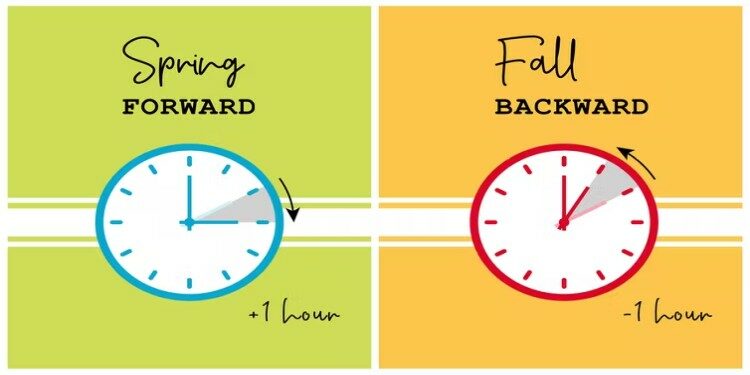In news– The United States Senate, recently has unanimously passed a law making daylight saving time (DST) permanent, scrapping the biannual practice of putting clocks forward and back coinciding with the arrival and departure of winter.
What is Daylight Saving Time(DST)?
- Daylight Saving Time, also called summer time, is a system for uniformly advancing clocks, so as to extend daylight hours during conventional waking time in the summer months.
- In countries in the Northern Hemisphere, clocks are usually set ahead one hour in late March or in April and are set back one hour in late September or in October.
- The practice was first suggested by Benjamin Franklin in 1784.
- In 1907 an Englishman, William Willett, campaigned for setting the clock ahead by 80 minutes in four moves of 20 minutes each during April and the reverse in September.
- Several countries, including Australia, Great Britain, Germany, and the United States, adopted summer DST during World War I to conserve fuel by reducing the need for artificial light.
- A group of Canadians in Port Arthur (Ontario) were the first to adopt the practice on July 1, 1908, setting their clocks an hour ahead.
- Many studies have listed out the disadvantages of DST, as one hour of lost sleep in the US, increases the fatal crash rate by 5.4% to 7.6% for six days following the transition.
- Other disadvantages are: a higher rate of workplace injuries after the switch, leading to lost days of work; a slight drop in stock market performance; health problems as a result of disruption of the circadian rhythm (body clock) and even longer sentences ordered by judges deprived of sleep.
- Once the USA’s Sunshine Protection Act is passed, it will come into effect in November 2023.
- The practice of turning clocks back by an hour to standard time every November will stop — and DST, which now starts in March, will be in effect all year round.
- DST is currently followed by some 70 countries twice a year.
Greenwich Mean Time (GMT)-
- Greenwich Mean Time is the yearly average (or ‘mean’) of the time each day when the Sun crosses the Prime Meridian at the Royal Observatory Greenwich, London.
- At different times in the past, it has been calculated in different ways, including being calculated from noon.
- The term ‘GMT’ is also used as one of the names for the time zone Coordinated Universal Time (UTC)+00:00.
- Essentially, mean time is clock time rather than solar (astronomical) time.
- Solar time varies throughout the year, as the time interval between the Sun crossing a set meridian line changes.
- But each day measured by a clock has the same length, equal to the average (mean) length of a solar day.
- It’s a way of standardizing and regularizing time.
Indian Standard Time (IST)-
- IST is the time zone observed throughout India, with a time offset of UTC+05:30 which means, IST is 5:30 hours ahead of Coordinated Universal Time (UTC).
- This time zone is in use during standard time in Asia.
- India Standard Time is a half-hour time zone.
- Its local time differs by 30 minutes instead of the normal whole hour.
- India does not observe daylight saving time or other seasonal adjustments.
- In military and aviation time IST is designated E* (“Echo-Star”) and is indicated as Asia/Kolkata in the IANA time zone database.
















